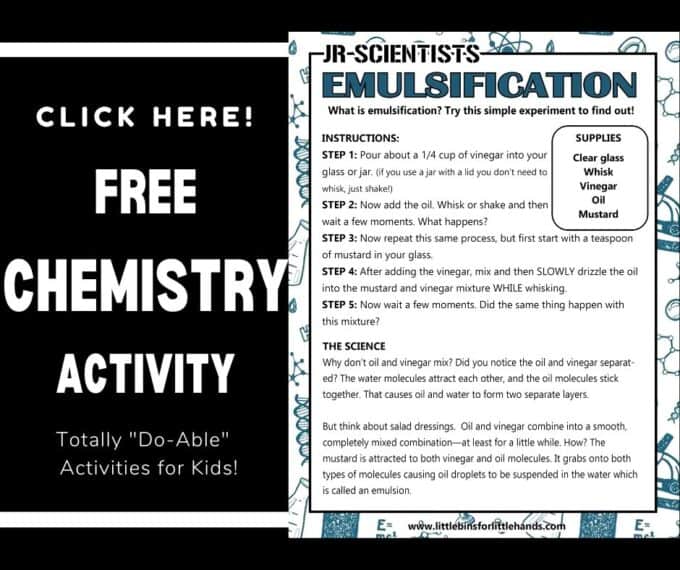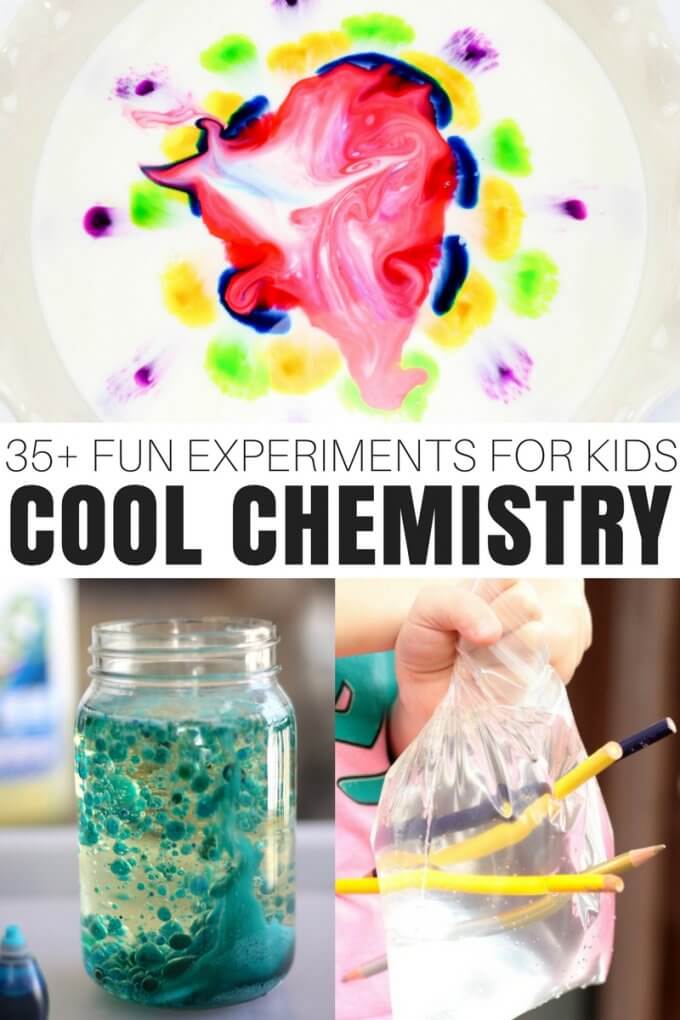Yes, you can mix oil and vinegar together for the perfect salad dressing! It’s called emulsification. Simple science you can set up with ingredients found in your kitchen cupboards. This homemade oil and vinegar dressing is fun chemistry for kids you can eat. Enjoy easy science experiments all year round!
HOW TO MIX OIL AND VINEGAR
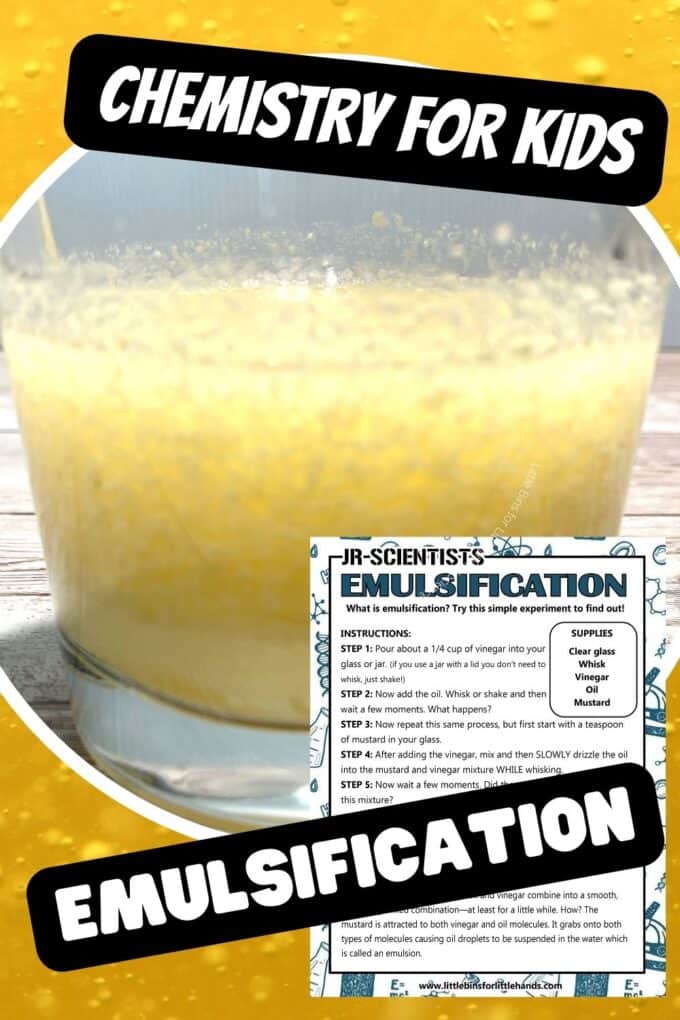
WHAT IS EMULSIFICATION?
If you have tried our oil and water experiment, or made a homemade lava lamp you would have discovered that oil and water don’t mix. The water molecules are attracted to each other, and the oil molecules stick together. This causes the oil and water to form two separate layers.
Let’s think about salad dressing! How do you keep salad dressing from separating? How do you get oil and vinegar (which contains water) to combine into a smooth, completely mixed combination—at least for a little while. The solution – you need an emulsifier!
Emulsification is a process by which two liquids which can’t dissolve in each other are forced to combine in a liquid mixture (emulsion).
To create a successful emulsion, you need two things: an emulsifier, and force. The force we use below to create our salad dressing is whisking and it breaks apart the oil into tiny particles that can be suspended in the vinegar.
Mustard works as an emulsifier and adds flavor, thanks to mucilage, the mustard seed’s outer coating. The mustard is attracted to both the vinegar and oil molecules. It grabs onto both types of molecules causing oil droplets to be suspended in the water, creating an emulsion.
Other emulsifiers you could use in salad dressing are egg yolk, mayonnaise, tomato paste and honey. Emulsifiers are also used in other foods like sauces, gums, chocolate and ice cream. They hold the ingredients together and give the food a soft and smooth texture.
Check out all our chemistry experiments for kids!
SCIENCE EXPERIMENTS FOR KIDS
Science learning starts early, and you can be a part of that with setting up science at home with everyday materials. Or you can bring easy science experiments to a group of kids in the classroom!
We find a ton of value in cheap science activities and experiments. All our science experiments use inexpensive, everyday materials you can find at home or source from your local dollar store.
We even have a whole list of kitchen science experiments, using basic supplies you will have in your kitchen.
You can set up your science experiments as an activity focusing on exploration and discovery. Make sure to ask kids questions at each step, discuss what is happening and talk about the science behind it.
Alternatively, you can introduce the scientific method, get kids to record their observations, and make conclusions. Read more about the scientific method for kids to help you get started.
Click here to get your free printable oil and vinegar project!
OIL AND VINEGAR DRESSING
Apply the scientific method by changing one variable. You could repeat the experiment with different types of oil, vinegar or even vary the amount or type of emulsifier.
SUPPLIES:
- Clear glass or jar with lid
- Whisk
- Vinegar
- Oil
- Mustard
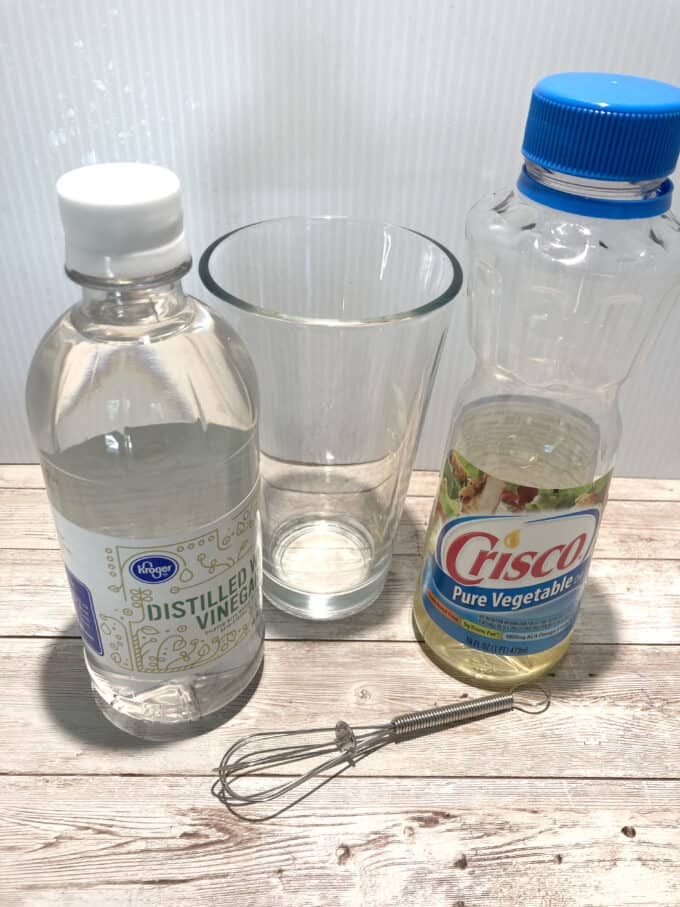
INSTRUCTIONS:
STEP 1: Pour about a 1/4 cup of vinegar into your glass or jar. If you use a jar with a lid you don’t need to
whisk, just shake!
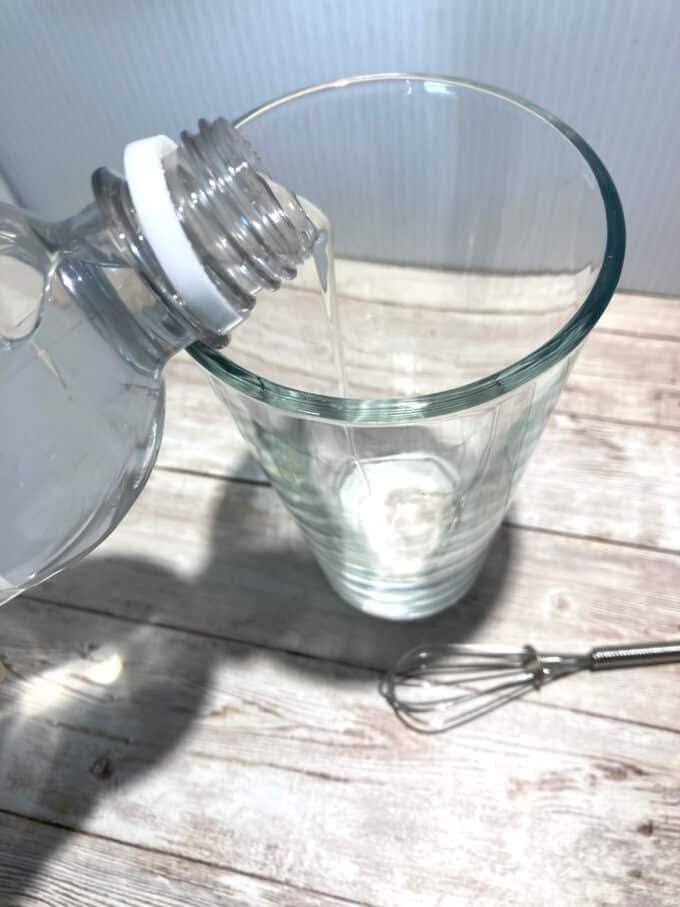
STEP 2: Now add the oil.
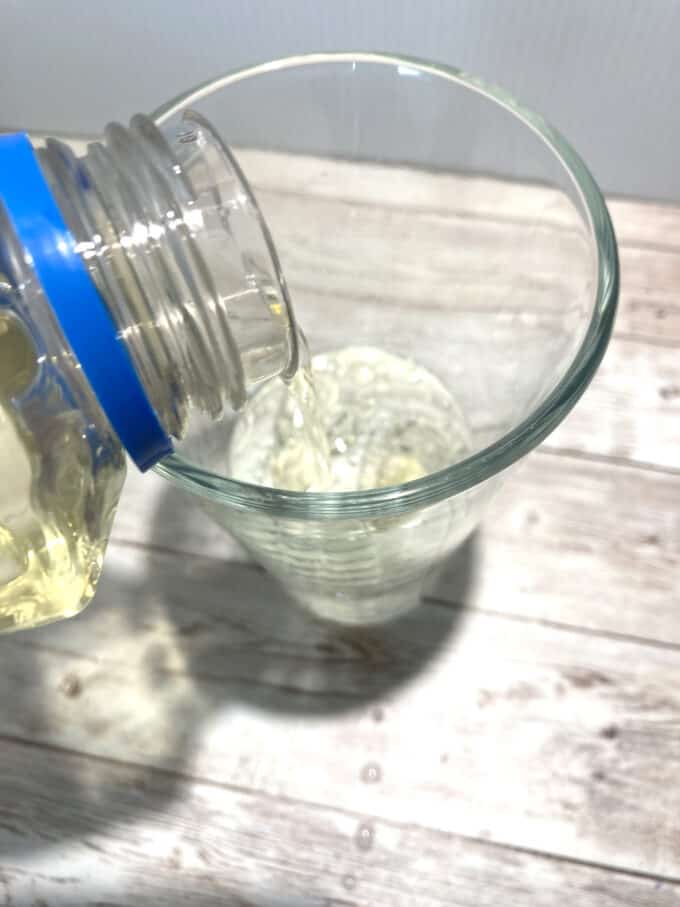
Whisk or shake and then wait a few moments. What happens?
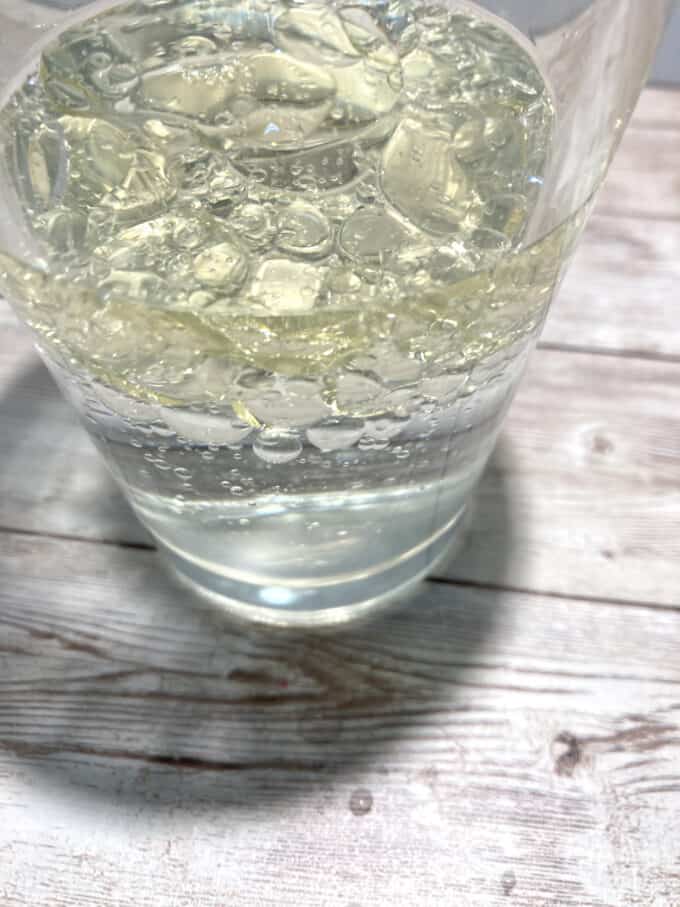
STEP 3: Now repeat this same process, starting with a teaspoon of mustard in your glass.
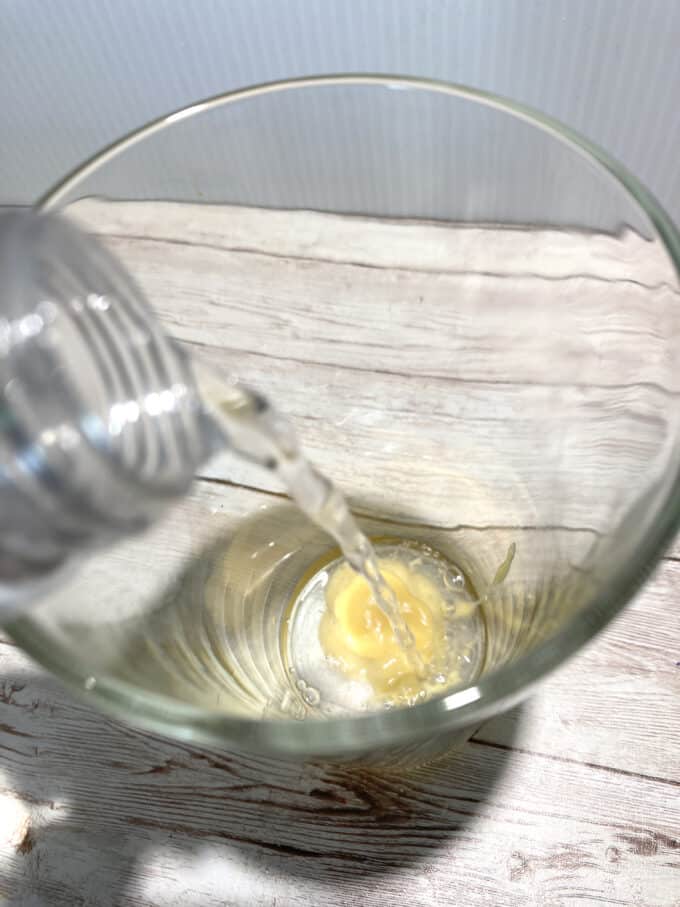
STEP 4: After adding the vinegar, mix. Then SLOWLY drizzle the oil into the mustard and vinegar mixture WHILE whisking.
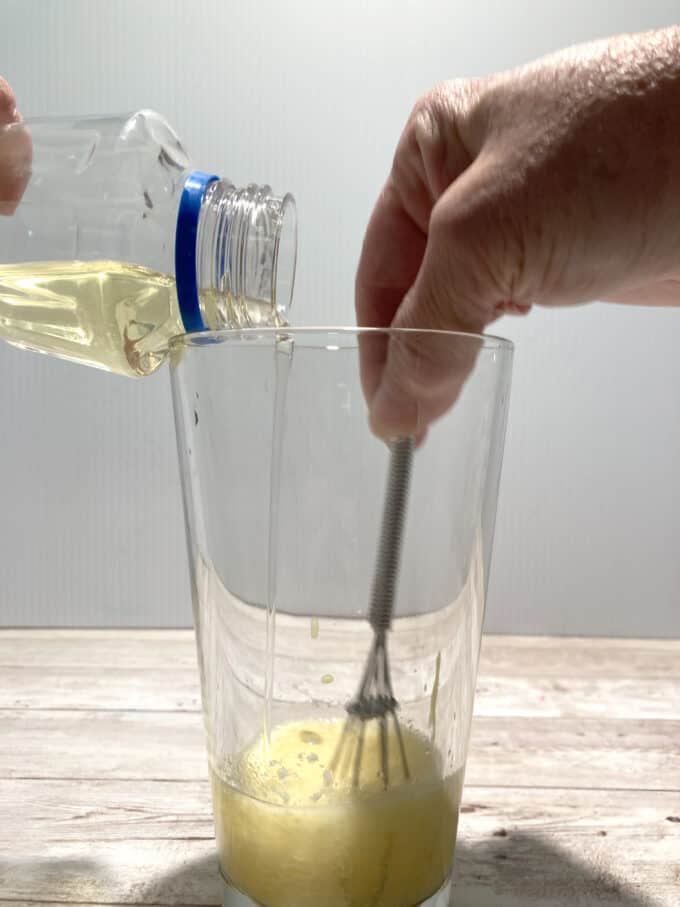
STEP 5: Now wait a few moments. Did the same thing happen with this mixture?
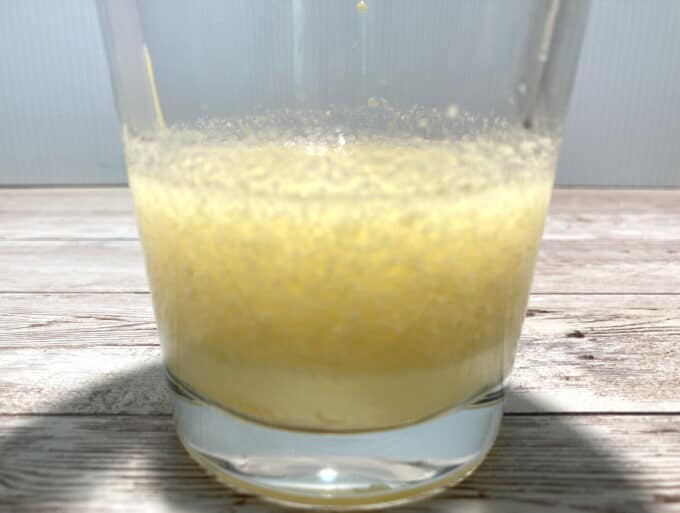
MORE FUN CHEMISTRY EXPERIMENTS TO TRY
Can you make a naked egg with vinegar!
Set up a bottle rocket with this easy chemical reaction.
Inflate a balloon with this soda balloon experiment.
Try a fun salt volcano experiment.
Is this our most popular baking soda and vinegar reaction?
MIXING OIL AND VINEGAR FOR KITCHEN SCIENCE
We love exploring simple chemistry you can do at home or in the classroom that isn’t too crazy, but is still lots of fun for kids! Make sure to check out more fun chemistry experiments!



